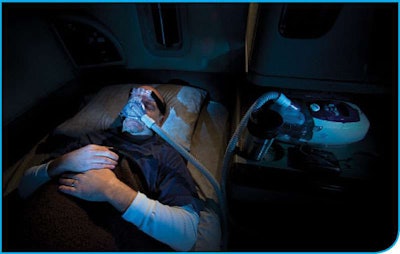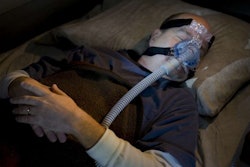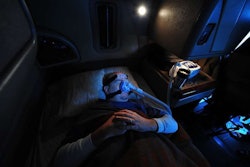
With the Federal Motor Carrier Safety Administration facing criticism over a lack of clear-cut guidelines for medical examiners on screening for and treatment of the sleep apnea condition and its hands tied by Congress on addressing apnea screening with regulatory guidance, the agency’s new bulletin on the obstructive sleep apnea condition snuck in to the website of the National Registry of Certified Medical Examiners.
The bulletin, following the promise of some apnea clarification issued in December, is directed to both medical examiners and training organizations that provide curriculum for examiners’ certification in the months-old National Registry. In the bulletin, regulators spell out in detail the current state of regulations respective to sleep apnea in driver medical certifications, likewise laying out various “encouragements” for examiners to consider relative to the condition.
Sleep apnea falls under the category of respiratory dysfunction in the physical qualifications for drivers.
Under advisory criteria published in the year 2000, the currently effective criteria, FMCSA says in the bulletin, the agency “recommends that, if a medical examiner believes the driver’s respiratory condition is in any way likely to interfere with the driver’s ability to safely control and drive a commercial motor vehicle, the driver should be referred to a specialist for further evaluation and therapy.”
If a medical examiner suspects apnea, or if the driver reports an apnea diagnosis, the examiner “should consider referring the driver to a specialist for evaluation before issuing a medical examiner’s certificate,” the bulletin says, under 2000 guidance, or “request additional information from the driver and his or her treating healthcare professional about the management of the driver’s OSA, respectively.”
While the bulletin reiterates that a diagnosis of sleep apnea can thus be a disqualifying condition, and suspicion of it reason to withhold certification or to issue conditional, temporary certifications pending further information, the agency further “encourages” medical examiners to consider the following:
**AHI > or = 15: Drivers with “moderate-to-severe” obstructive sleep apnea are the primary targets for necessary treatment. Crucially, the bulletin defines moderate-to-severe apnea as a condition illustrated by an “apnea-hypopnea index (AHI) of greater than or equal to 15.”
**Drivers with apnea not automatically unfit: Drivers are not required to be “considered unfit to continue their driving careers” — medical examiners should “make a determination whether they need to be evaluated and, if warranted, demonstrate they are managing their OSA to reduce the risk of drowsy driving.”
**Examiners have wide latitude on screening: Though the bulletin acknowledges that FMCSA has no current advisory guidance on screening of drivers for undiagnosed apnea, “medical examiners should consider common OSA symptoms such as loud snoring, witnessed apneas, or sleepiness during the major wake periods.” Risk factors like high body-mass-index measurements, neck size, incidence of a single-vehicle crash and others are also mentioned.
**Drivers/specialists have options on testing: In diagnosing apnea, examiners should rely on “in-laboratory polysomnography, at-home polysomnography, or other limited-channel ambulatory testing devices which ensure chain of custody.”
Finally, drivers have wide latitude on treatment options. FMCSA underscores that sleep apnea “is a treatable condition, and drivers with moderate-to-severe OSA can manage the condition effectively to reduce the risk of drowsy driving.” The bulletin goes on to encourage options not limited to Continuous Positive Airway Pressure (CPAP) therapy but also weight loss, dental appliances and/or treatments utilized in combination.
“The Agency’s regulations and advisory criteria do not include recommendations for treatments for OSA,” FMCSA says, “and FMCSA believes the issue of treatment is best left to the treating healthcare professional and the driver.”











